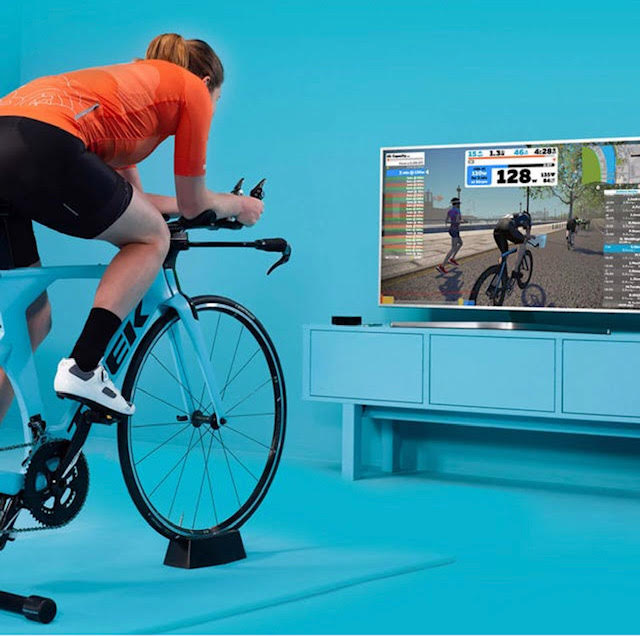Exercise in lockdown has become one of the major talking points of the whole pandemic: what’s allowed, how long, how far, with whom… there has been much uncertainty, but the one certainty is that without some form of exercise many of us are going to have trouble squeezing back out of the door when life begins to return to normal, as it is starting to do now. .
Although many have been content to work out with Joe Wicks and other celebrities on the TV – and there’s nothing wrong with that – some have taken the opportunity to start exploring the world of virtual reality exercise online, and in that world there is one indisputable leader, which is the online cycling platform, Zwift (other providers are available, but we’ll focus on this one for now; all the information below about setup etc. is equally applicable to them). Not only is online cycling a good way to keep fit in lockdown, it does seem that with socially distanced public transport and closed roads as we return to work, many of us are going to have to think about cycling for our commute, so it’s a perfect way to get ready for that as well.
For the uninitiated, Zwift offers home cyclists a selection of “worlds” in which to exercise, ranging from Watopia, its own imaginary world of jungles, deserts, mountains and volcanoes, to the 2019 world race championship course in Harrogate, from Central Park in New York to London and the Surrey Hills. These worlds are all animated in a rich and visually satisfying way; your (customizable) cycling avatar is set down on the road and away you go. You can participate in workouts, join in races (even Tour de France cyclists such as Geraint Thomas and Mark Cavendish have been racing on Zwift during lockdown) or just cruise around as you please.
To participate on Zwift, the most basic equipment you need is a laptop, a bicycle and a turbo trainer on which to mount it. Trainers come in two forms, smart or, umm… non-smart. With a non-smart trainer (around £50 up), you’ll need a speed or cadence sensor (available from around £20) to send information about how fast you’re going to the program. This is fine, but the drawback is you can only change resistance by changing gears on your bike, you are only giving information to the computer, not getting any back, so, for example, if you hit a steep hill, your avatar will start going more slowly, but you won’t feel any difference on the bike. Where Zwift gets really fun is if you have a smart trainer; these are much more expensive (£500+), but also offer a much more realistic and satisfying experience because the computer feeds back to the trainer which increases resistance levels depending on the terrain you are riding, so when you hit a hill pedaling gets much tougher. Having ridden in the Alps in real life and on Zwift, I have found that the effort levels are virtually indistinguishable.
If cycling really isn’t your thing, Zwift can also be enjoyed by runners/walkers using treadmills; there are smart treadmills coming onto the market but these are expensive (£800+) and not really necessary for a runner. A basic treadmill (starting around £80) can be used with a “footpod” (Zwift’s own brand costs £38), a small device that attaches to the laces of your running shoes and sends Zwift all the information it needs to get you jogging away on screen.
A subscription to Zwift costs £12.99 in the UK, but there is a seven day free trial option.

Embaphy says:
http://prednisonebuyon.com/ – Prednisone
fintedy says:
neurontin